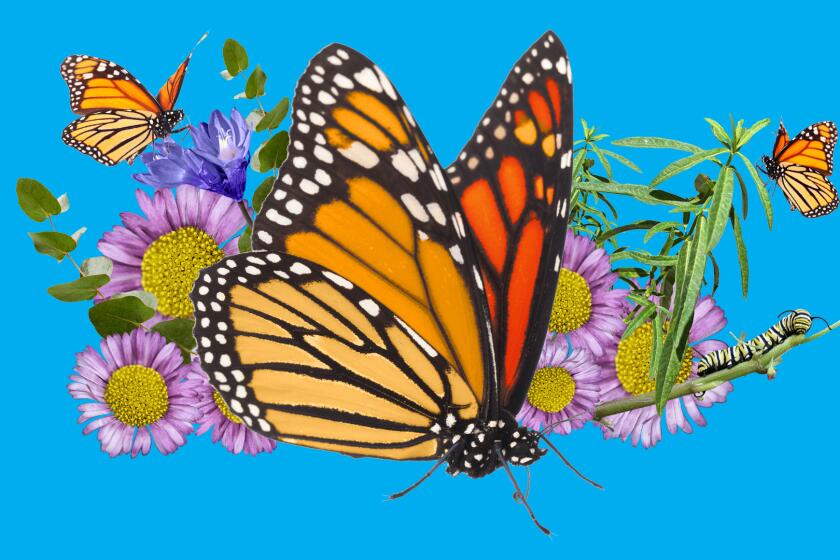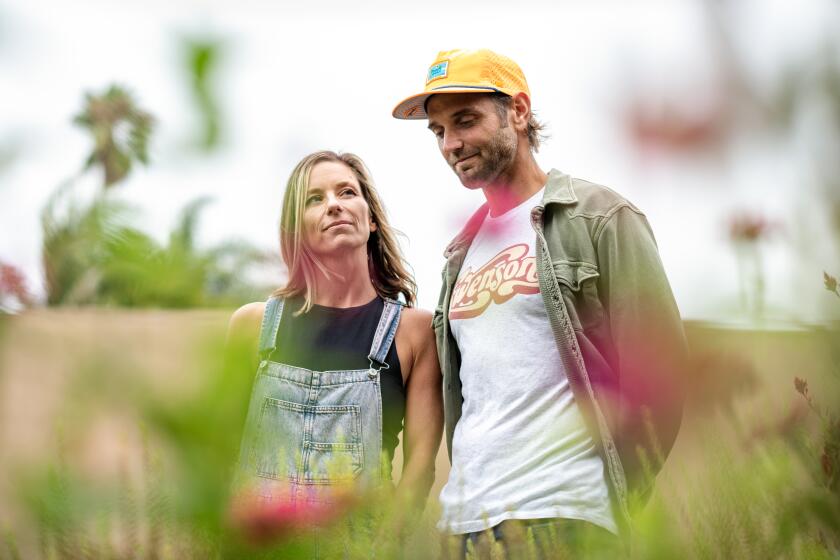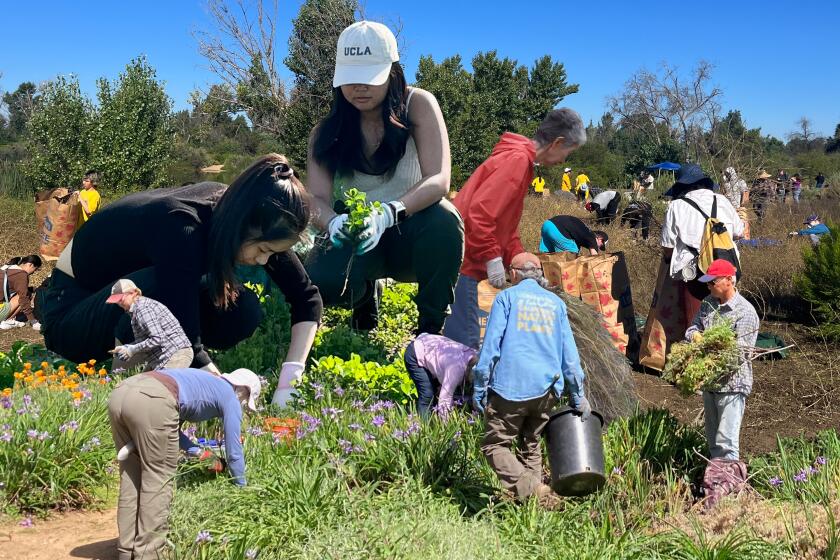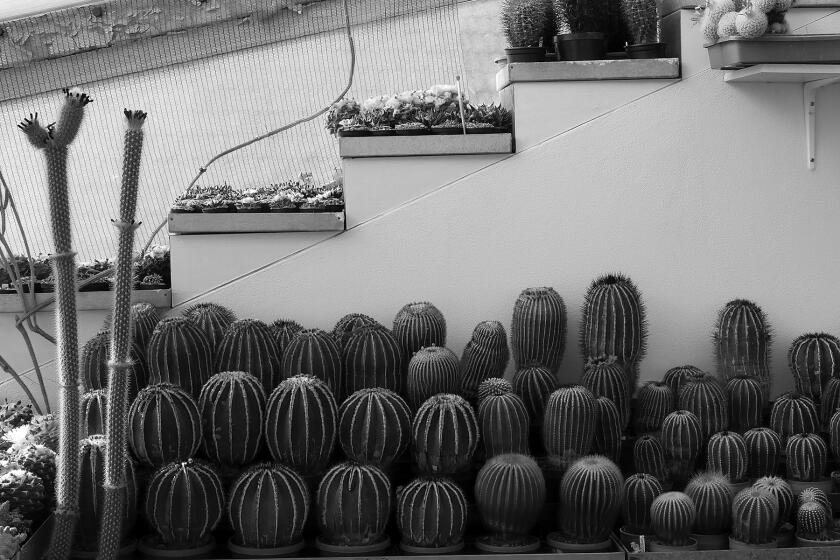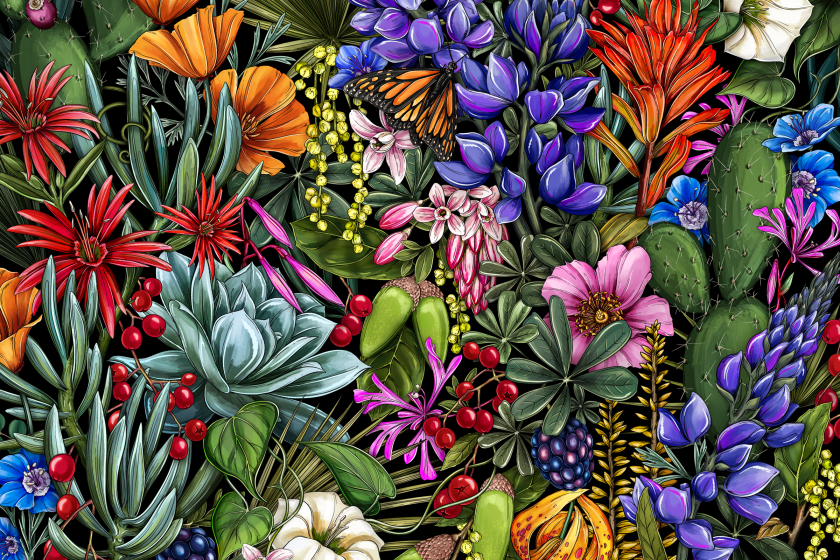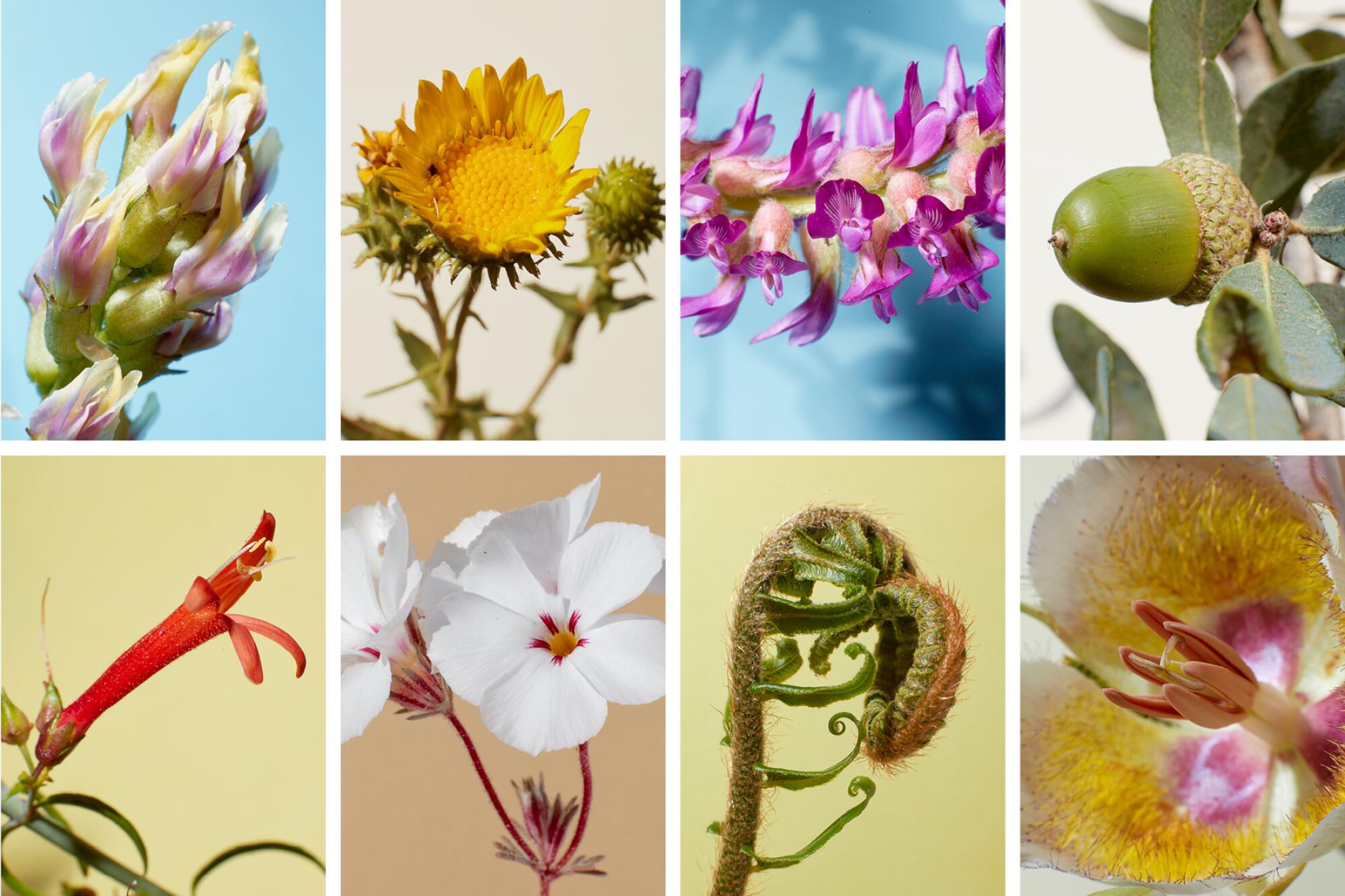
At 34, Matt Smith is a widower and amateur botanist whose grief and passion are fueling a quest some might call quixotic — to photograph every plant native to Los Angeles County.
- Share via
At first glance, Matt Smith seems too chill to be a knight. His “shining armor” is just a backpack, a floppy bush hat and a pair of hightop Vans skate shoes designed by his friend, pro skateboarder Lizzie Armanto.
But talk to him for just a minute and you can easily spot the determined zeal in his denim-blue eyes and the cheerful steel in his resolve, because Smith is a man on a noble mission some might call quixotic: to find and photograph every plant — a mere 2,590 — that grows natively in Los Angeles County.
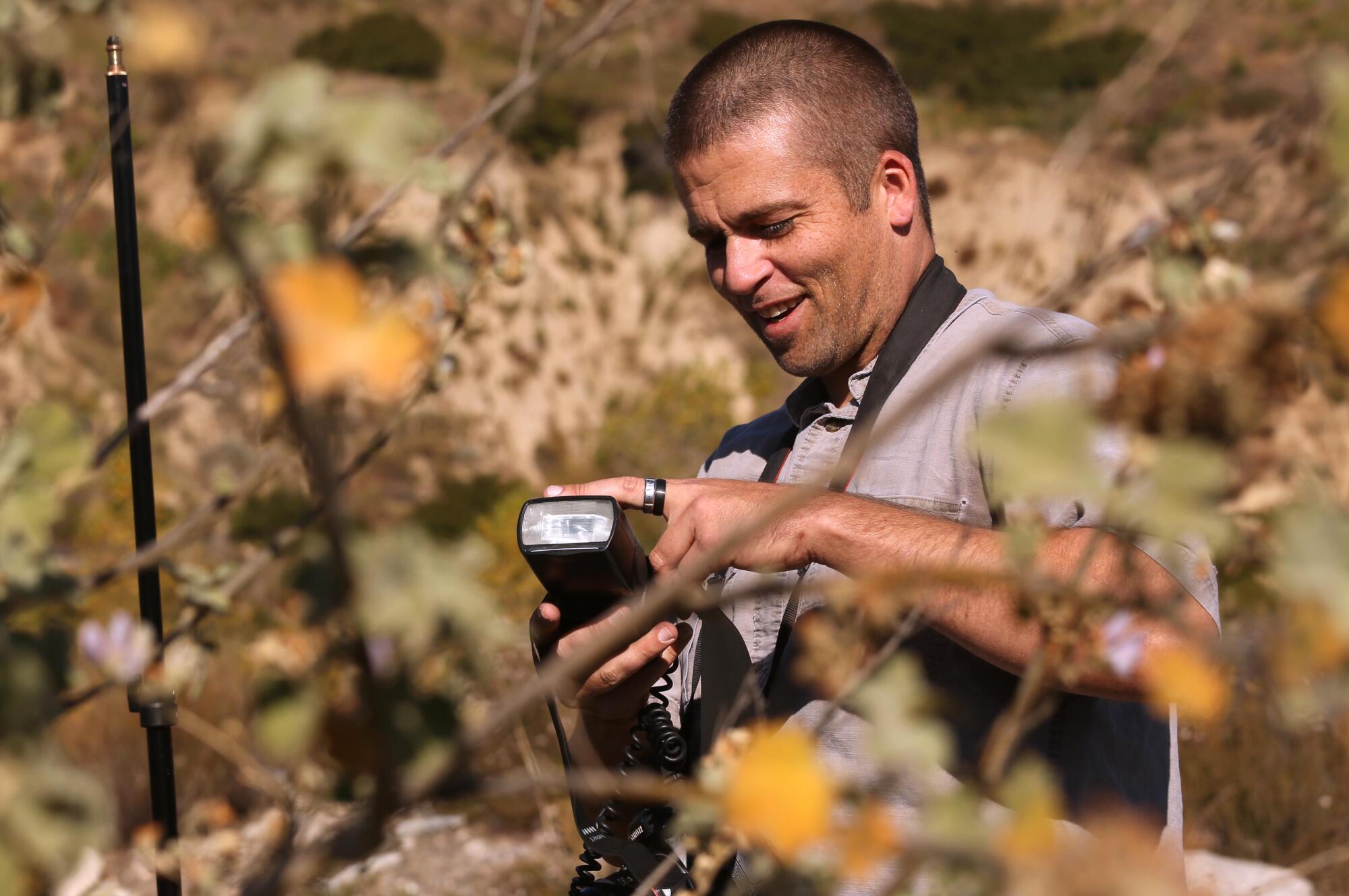
Ultimately Smith wants to make Angelenos more aware of the beauty and diversity of the county’s native flora. He posts all his photos on his Instagram page @plantsoflacounty and emphasizes the importance of those plants to the survival of the region’s native birds, insects and animals.
He’s been at the project for two years, and has photographed about 750 plants so far. He doesn’t get paid or even recognized for his work — his Instagram page has only 4,281 followers. And while he is modestly confident he will achieve his goal, he doesn’t really know what he’ll do with all those photos once he’s done.
Western monarch populations have rebounded since their calamitous drop in 2020 but are still far below historic norms. Are native milkweed giveaways helping?
Because like most people on a quest, Smith’s real motivation is deeply personal.
“It’s definitely like a passion,” said Smith, 34. “I lost my wife to cancer in 2020 and this plant project has been a big part in helping me recover from all of that. It’s helped me understand how life works at a larger scale, and that sometimes genetics don’t go the way you want them to.”
Smith met his wife, Alison Eriguel in 2017. She developed products for a clothing company, and he was a skateboarder doing product photography, mostly focused on skateboards, but they both shared an interest in plants.
“It was around the time that houseplants were getting really popular, so she got into houseplants and I got into cacti. We could both go to Home Depot or Lowes and have fun together,” he said. “It was a wild time and we just clicked. We were soul mates and we moved in together before she got sick.”
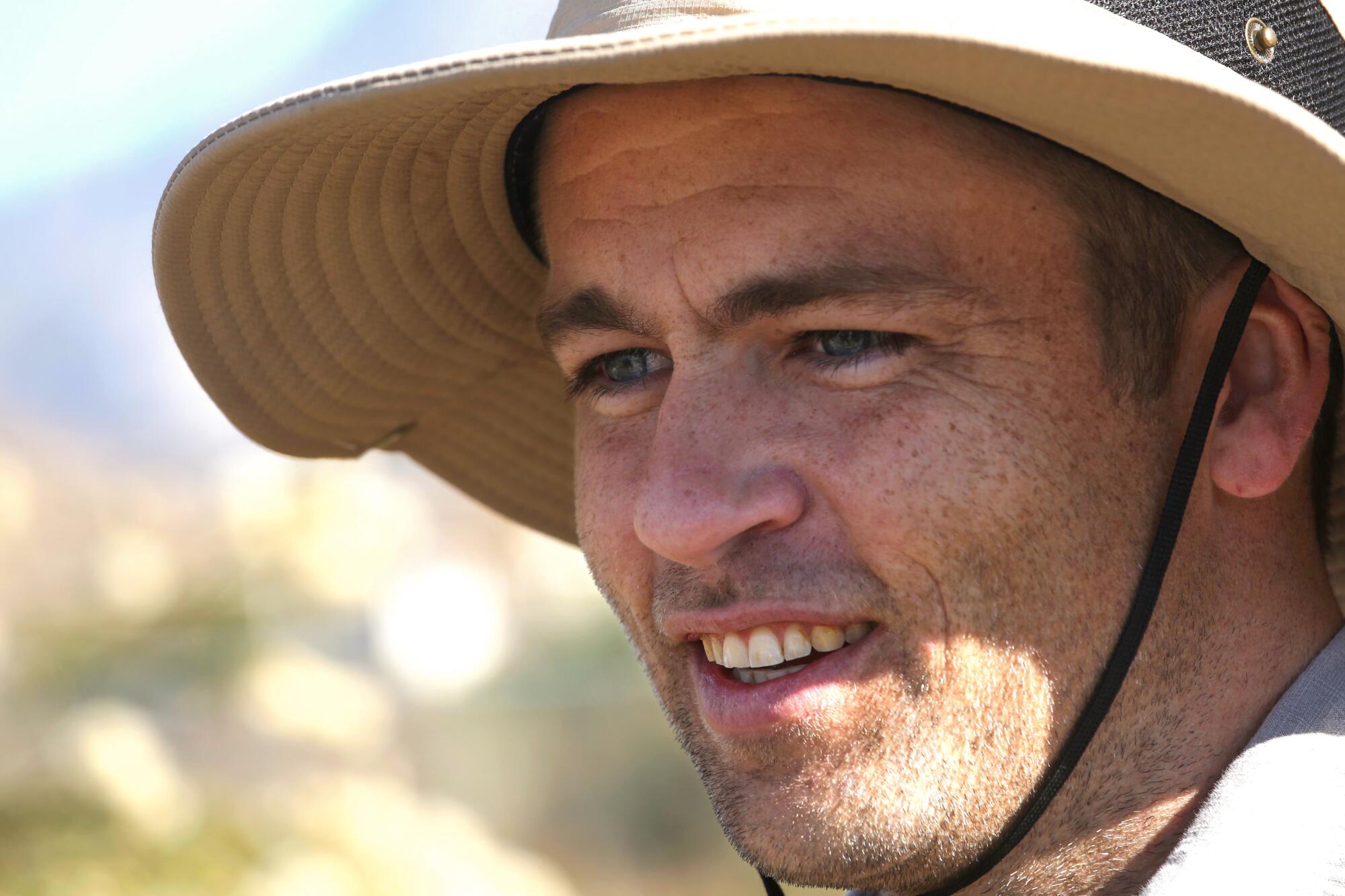
But in early 2019, Alison was diagnosed with hereditary diffuse gastric cancer (HDGC), an inherited condition caused by a mutation in the CDH1 gene that’s very difficult to spot in the early stages. By the time they found it in Alison, Smith said, the cancer had advanced to stage 4.
“We’d already talked about getting married, but we were going to wait,” Smith said, “you know, those little stipulations you put on yourself — ‘When we do this, then we can get married’ — but after she got sick, we realized there was no good reason to wait.”
Their wedding was in March 2020. Alison died in November. “Normally people die within three months after they find out, but she lasted nearly two years,” he said, “which was pretty nice.”
Chad and Stacie Vanags’ backyard cutting garden has become a healing sanctuary for the couple and others, following Chad’s Stage 4 lung cancer diagnosis.
After she was gone, Smith moved into his parents’ home in La Crescenta “to recover.” He had given up his photography jobs in the final year of Alison’s life. “It just became too much because we were basically living out of a hospital the whole time. ... I had to choose one.”
He didn’t realize until later that the seeds for his new passion had already been planted. Ever curious, he’d started taking photos of his cactus collection, “wondering if I could shoot cacti the way I shot all my skateboarding products.” And before she died, he and Alison lived with her parents in Torrance, where they liked to visit the Madrona Marsh Preserve and Nature Center, admiring the native plants and animals in one of the region’s last undeveloped wetlands and taking photos to upload onto the citizen scientist app iNaturalist.
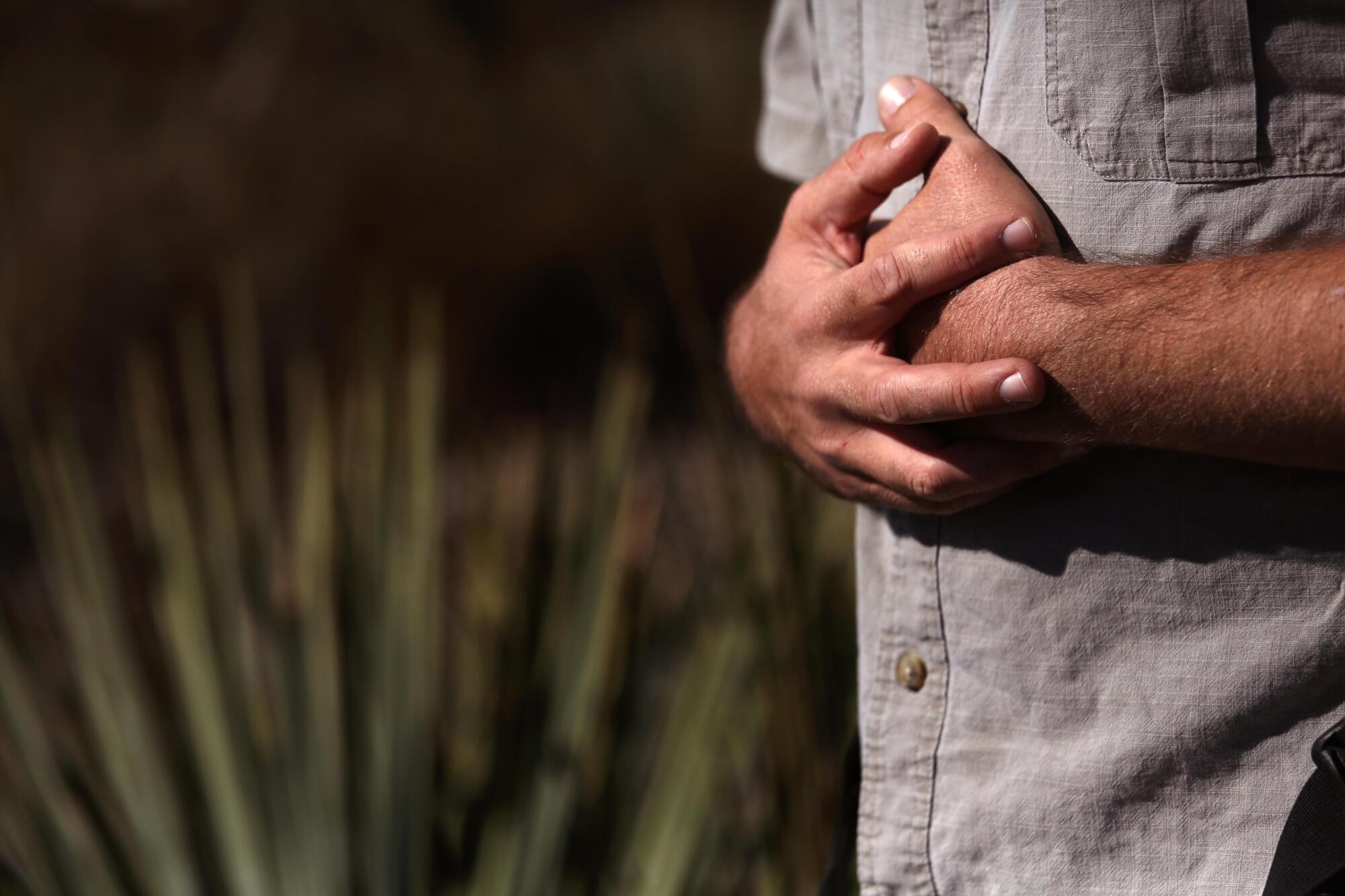
And then there was his aunt Pat Flanagan, a biologist, educator and desert activist who helped create the Mojave Desert Land Trust and is director of the Morongo Basin Conservation Assn. As a kid, he never thought too hard about his aunt’s fervor for protecting desert plants and animals, “but she always made biology seem like an interesting and accessible thing,” he said. “I used to think you had to go to the Amazon rainforest or something to see evolution and ecology, but she made me realize that it’s literally right here in your backyard, something incredible and really fun.”
The word “fun” shows up a lot in Smith’s conversation. He still skateboards regularly and delights in journeying down rabbit holes to satisfy his curiosity. That’s what germinated all those seeds, when he was researching cactus and clicked on a YouTube channel called Crime Pays, But Botany Doesn’t, described as “A Low-Brow, Crass Approach to Plant Ecology & Evolution as muttered by a Misanthropic Chicago Italian” known as Joey Santore.
One of the best ways to learn more about plants is to volunteer at Los Angeles area nurseries, botanic gardens, nature groups and plant advocacy organizations.
“He’s controversial, kind of like Joe Rogan,” Smith said, “But in terms of getting young people, especially young men, to love native plants, his overall effect on the plant community has been really good. He’s a big proponent of self-education and going on Google Scholar to read source material. I hadn’t studied science since high school, but learning about things like the California Floristic Province blew my mind, and asking professional scientists questions on iNaturalist ... my interest in being a citizen scientist really took off.”
(The California Floristic Province, by the way, comprises most of California, plus the southwest corner of Oregon and a chunk of northern Baja California. It’s considered one of the world’s 36 “biodiversity hot spots,” which Conservation International defines as regions that hold more than half of the world’s plants and more than 43% of the world’s animals.
Learning that his beloved state was a biodiversity hot spot was life-altering, Smith said, especially when he realized that Los Angeles County had some of the greatest diversity of plants and animals in the province.
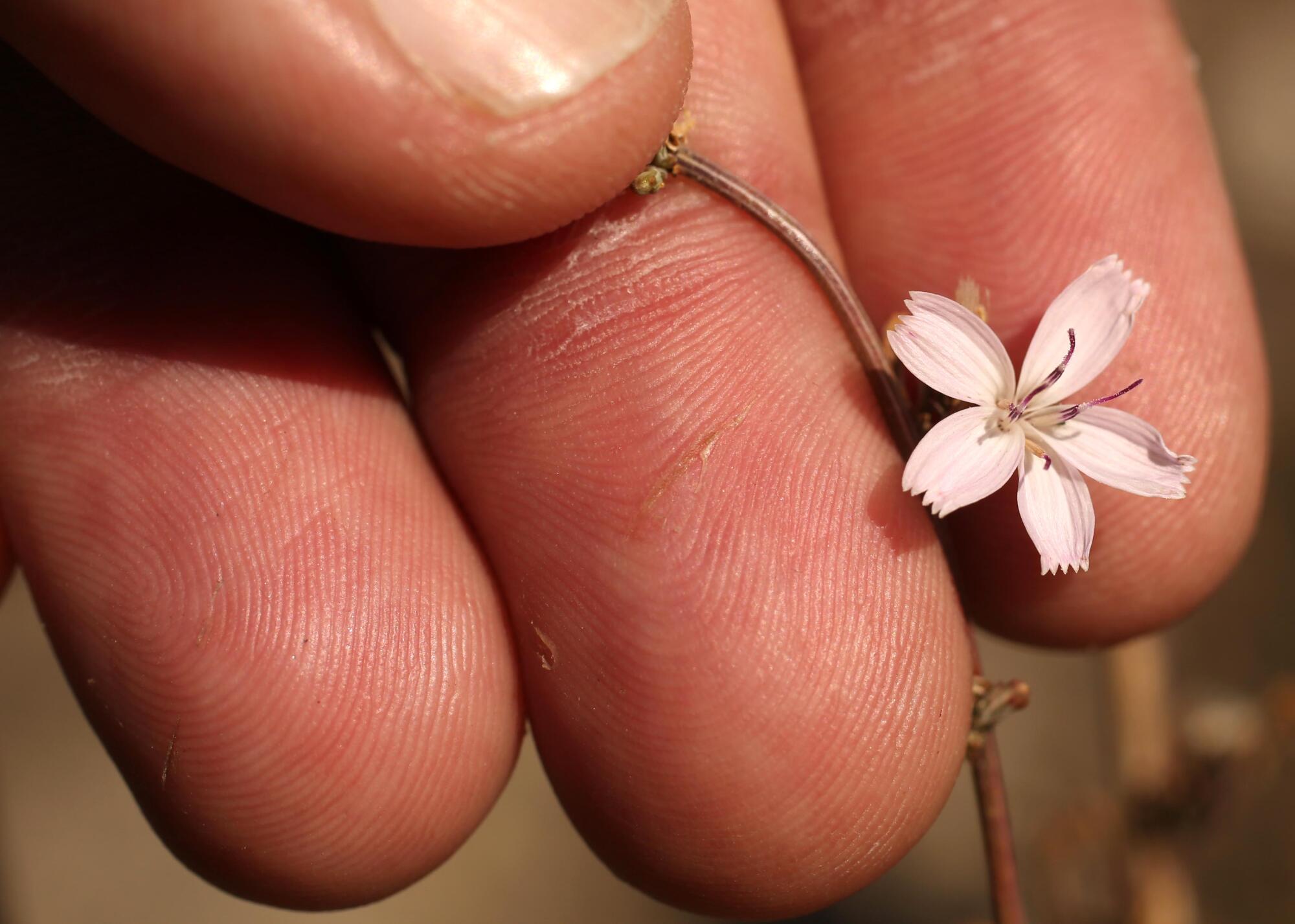
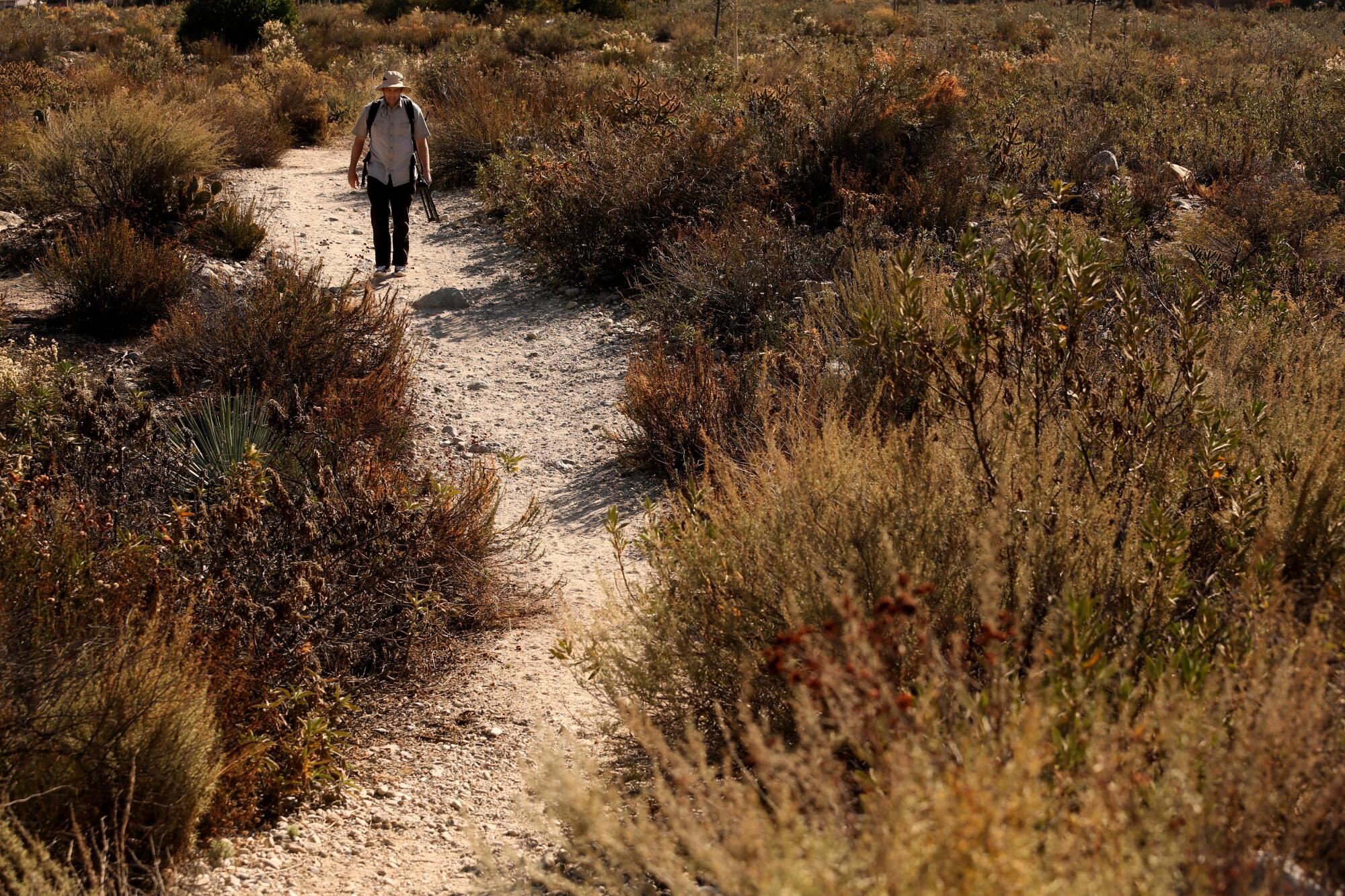
Thus began his deep dive into the county’s native plants, he said, with support and encouragement from experts such as botanist Naomi Fraga, director of conservation programs at California Botanic Garden; Jon Rebman, curator of botany at the San Diego Natural History Museum; and, of course, his Aunt Pat. “She’s very happy, and proud, that one of the kids she rambled at listened,” he said.
Smith’s first step was creating a list. There’s no definitive list of the county’s native plants, he said, so he did a search on Calflora, a nonprofit online database of California’s wild plants with entries from researchers, scientists, academics and citizen scientists using iNaturalist, and came up with a list of about 3,400 plants supposedly native to L.A. County’s diverse region of islands, deserts, mountains, coastlines and riverbeds.
Jared D. Margulies’ ‘The Cactus Hunters,’ unearths the global trade in stolen succulents. What these thieves might have to teach us about saving our plants
Except Smith knew that the locations for some of the plants were incorrect. “I found many observations from the High Sierras showing up as being in Beverly Hills,” he wrote on his Plants of L.A. County website, and many herbarium vouchers — i.e., pressed and mounted plant samples — that showed where the samples were stored in L.A. County instead of where the plants had been growing when they were collected.
So one by one he winnowed out the problem entries until he reached his working number of 2,590 plants native to the county. He used Calflora to pinpoint the areas where plants had been located, and then studied photos taken by others to help him find them in the field.
His goal is to photograph all the plants in the wild, when they are blooming, and be able to identify them by their Latin names as well as their common names, something he does with ease during a short expedition in the Big Tujunga Canyon in Sunland near Oro Vista Park. The hike is about a mile along the sandy wash, past the pink-white blooms of California buckwheat (Eriogonum fasciculatum), the cottony seed heads of California broomsage (Lepidospartum squamatum), the densely green laurel sumac trees (Malosma laurina), the tangled limbs of California juniper (Juniperus californica) and the tall skeletal remains of chaparral yucca blooms (Hesperoyucca whipplei).
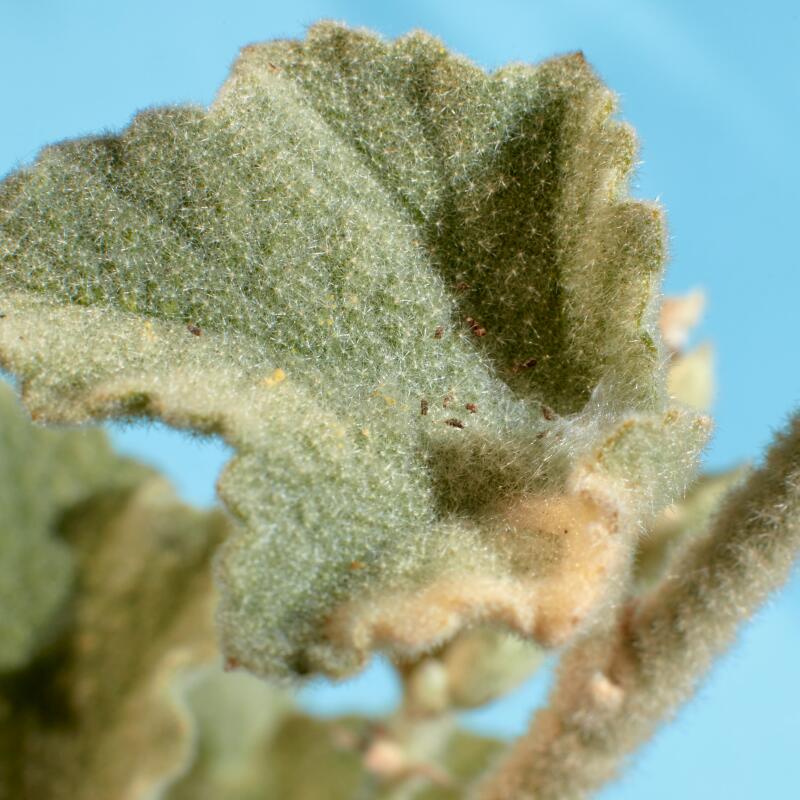
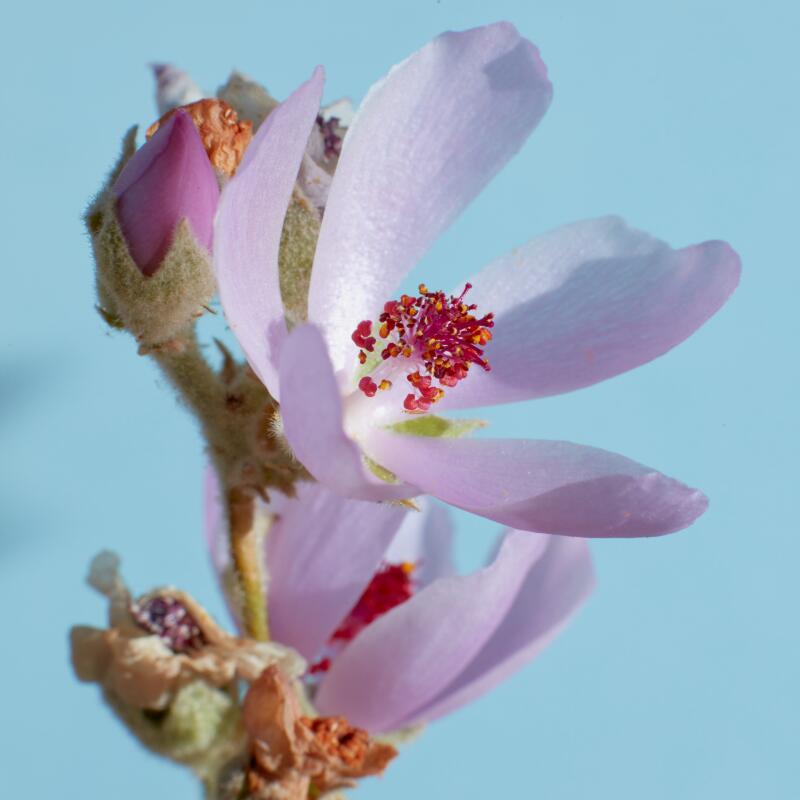
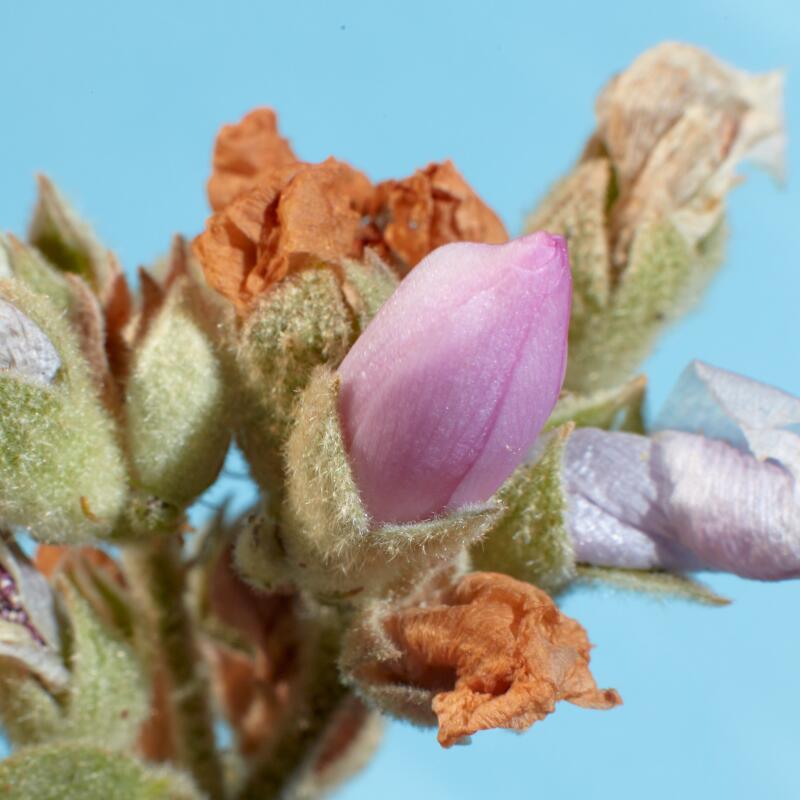
Malacothamnus davidsonii, a.k.a Davidson’s bush mallow, found in the Oro Vista Park in the Big Tujunga Canyon. (Matthew G. Smith)
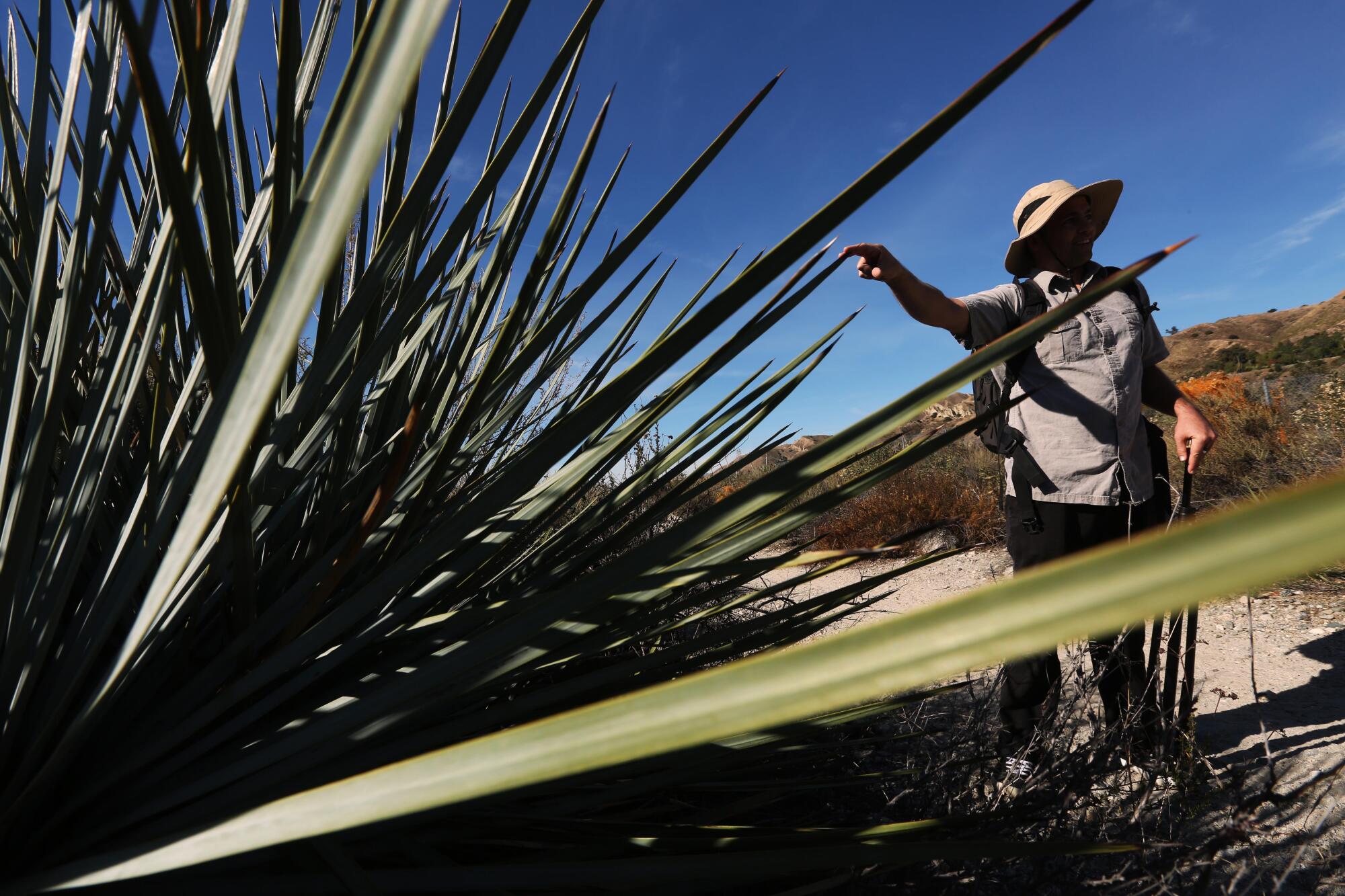
Ask him to identify the plants and Smith rattles off their names, like a walking Google app, and he usually has a story for each one — like how early orange farmers looked for stands of laurel sumac as the best places to plant their trees, because laurel sumac don’t like frost anymore than citrus trees do. And how the chaparral yucca can only be pollinated by the California yucca moth (Tegeticula maculata), so while the plant with its dramatic spear-shaped leaves and purple-lime flower spikes is a popular choice for landscapes, it won’t reproduce unless it’s planted in the Southern California coastal sage scrub areas where the moth resides.
This is a favorite spot for Smith and he figures he’s photographed all the native plants in this particular area. “It’s low-hanging fruit,” he says modestly, because it’s flat and easy to navigate. It’s also peaceful, and a glimpse into how the region must have looked before people began building roads and businesses and homes.
Here are the best retail native plant nurseries in Southern California to help you create a habitat for birds and pollinators in your yard or even on a patio.
Smith is an advocate of preserving wild spaces and landscaping with as many native plants as possible, but he backs away from preaching or condemning. He is sad that so much native habitat has been lost, along with the oral traditions of the Indigenous peoples who nurtured these plants for thousands of years.
“It’s really easy to be angry all the time, but it’s not productive and not helpful,” he said quietly. “We still have tons of excellent stuff around here, we’re really blessed,” especially now that people are becoming more aware of the importance of rebuilding habitats by planting native shrubs, trees and flowers.
“We’re losing our [native] birds and insects and I want to live in a world with birds and insects,” he said, “but to get the birds you need the insects, and to get the insects you need the plants, and it’s only native plants that support these insects, so personally, I think it would be a good thing” to landscape with native plants.

But that’s the end of his lecture. He’s reached his destination, a rare Davidson’s bush mallow (Malacothamnus davidsonii) shrub with woolly silver-green leaves and stalks of pale purple flowers. His tools are simple: a tripod to hold a flash to even out the light, and small pastel-colored core boards that he holds behind the flowers to create an uncluttered background. He holds his camera in one hand, takes multiple photos until he’s got the one with the best light, and then takes a few more of the leaves and overall shrub, for researchers who can’t make it to the site.
This self-imposed project has helped Smith decide his future course: He’s enrolled in an online program at Arizona State University to get a biology degree. “I’ve got to get some kind of job,” he said, “and I’d like one that works with plants.” He chose an online course to stay close to his parents and help them as needed. And as a member of the Los Angeles-Santa Monica Mountains Chapter of the California Native Plant Society, he’s started leading free hikes to introduce people to the county’s most endangered native plants. (He plans to do his next one in February.)
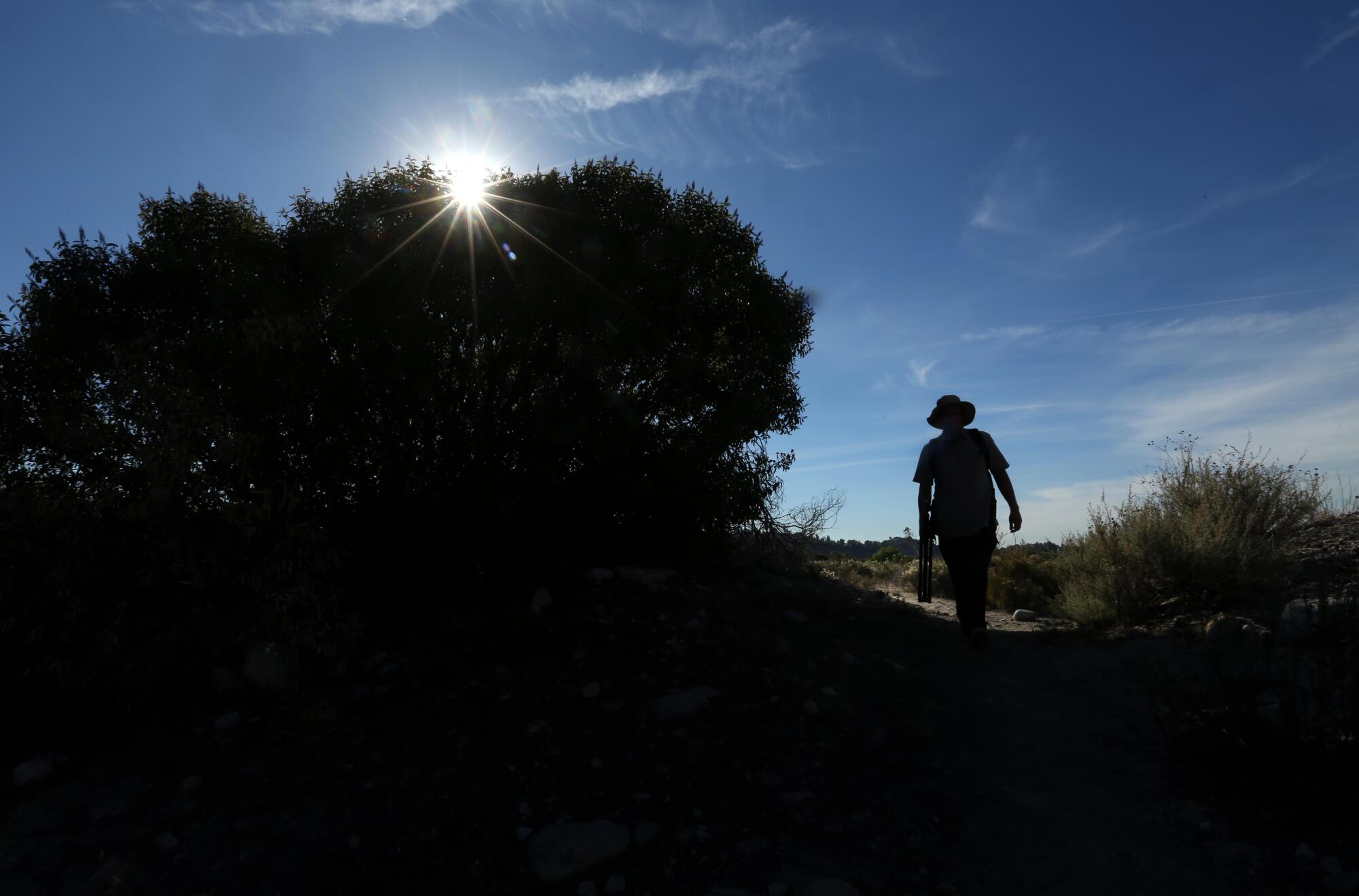
Plus, Smith said he’s proud of being from Los Angeles — “I’ll never leave L.A.” — and an online schedule lets him continue his mission, and process his grief.
“It’s easy to fall into the ‘Why-has-this-happened-to-me?’ self-pity stuff, but with this project, you get to see all these little stories everywhere in all these different regions. And you begin to see the differences in each population, so the genetics thing feels less personal,” he said.
“I guess you start to feel like, OK, I’m just one kind of creature on planet Earth. I have genes and my wife had genes, just as these plants have genes, and sometimes those genes let you live to 80 and sometimes there’s a mutation and you don’t get as long. ... Just putting things in perspective that way is kind of nice.”
More to Read
Sign up for The Wild
We’ll help you find the best places to hike, bike and run, as well as the perfect silent spots for meditation and yoga.
You may occasionally receive promotional content from the Los Angeles Times.
